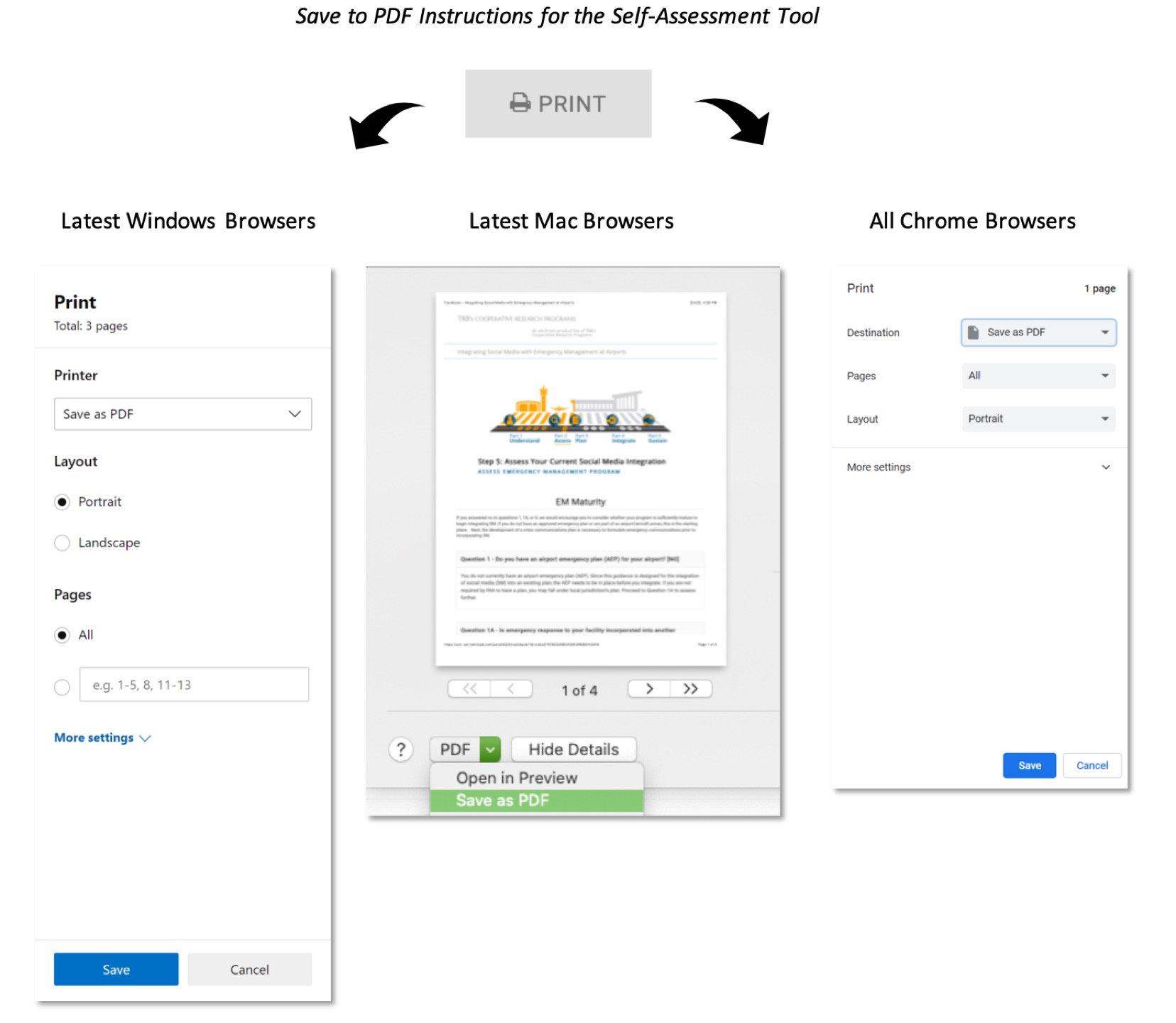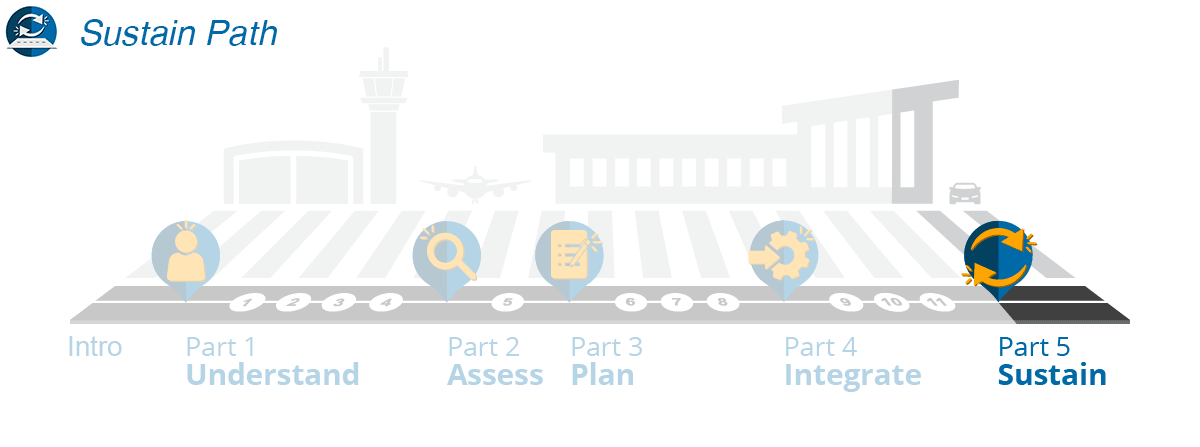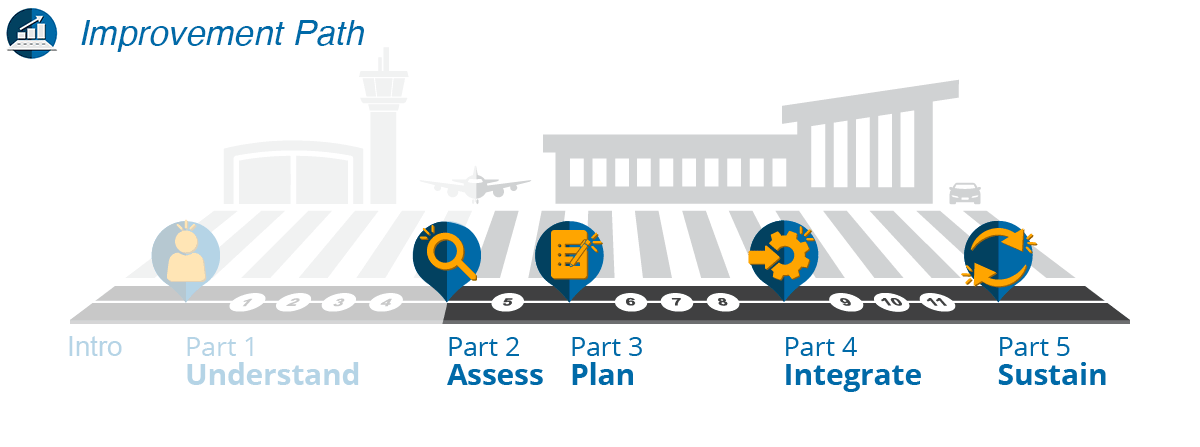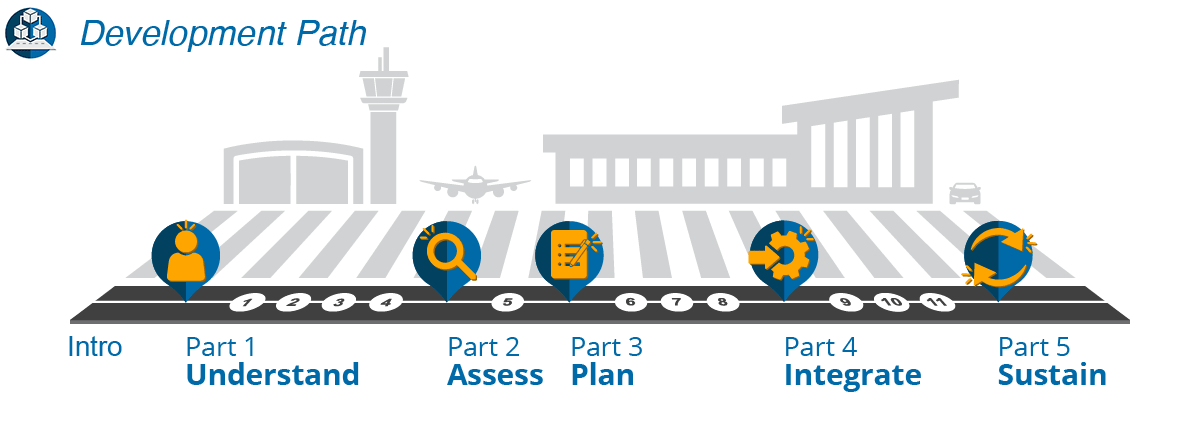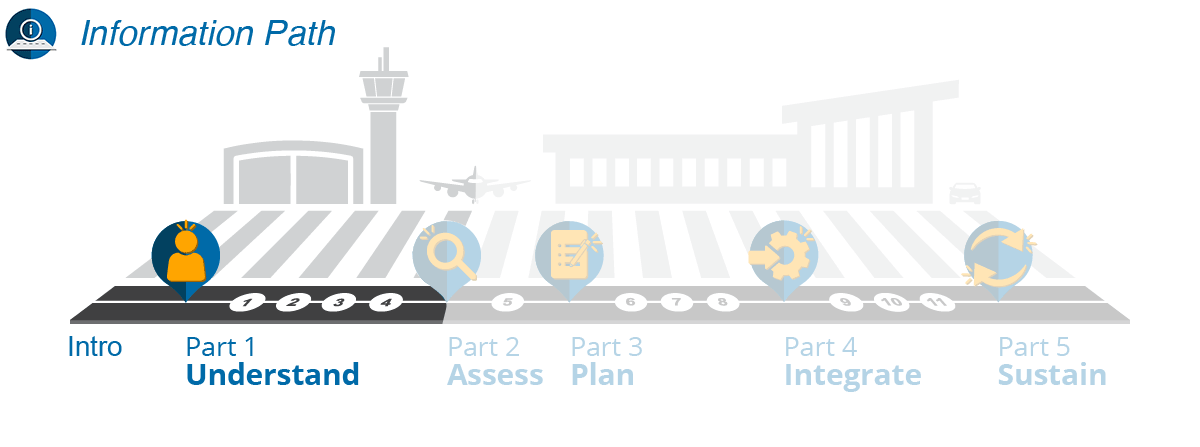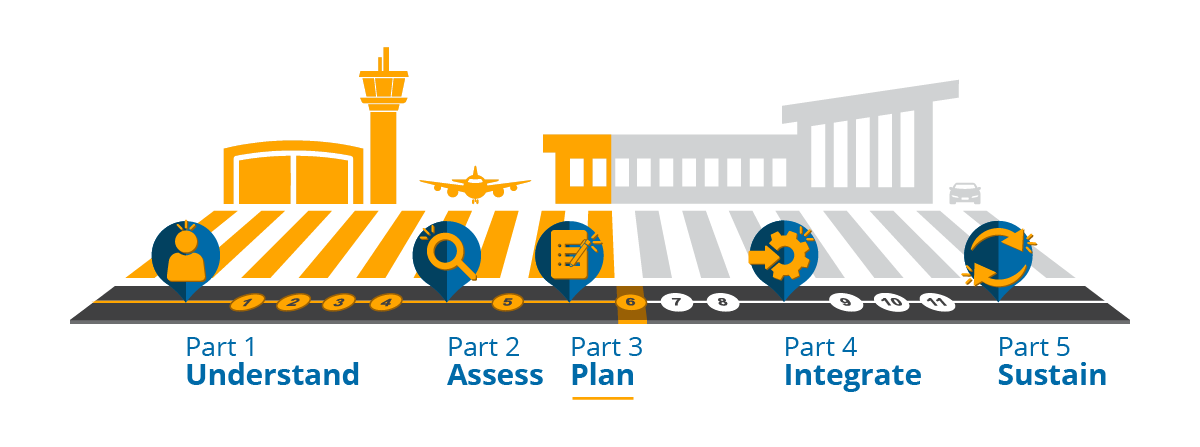
Step 6: Define Your Stakeholders
Whole Community
After assessing your airport community, it is time to consider the broader set of stakeholders with whom you may collaborate. This includes representatives from local jurisdictions, county and state level agencies, along with the federal regional and national coordination/command centers. Other public stakeholders include the medical community, public transportation, and non-governmental organizations such as the Red Cross (www.redcross.org). Along with these stakeholders, incorporate those in the disabled community, including advocacy groups such as Open Doors Organization (www.opendoorsnfp.org) and others to help address unique needs. Private entities (food, lodging, private transportation, etc.) may be used to supplement response and have a mutually beneficial relationship with the airport community. Figure 6.3 demonstrates this set of stakeholders.
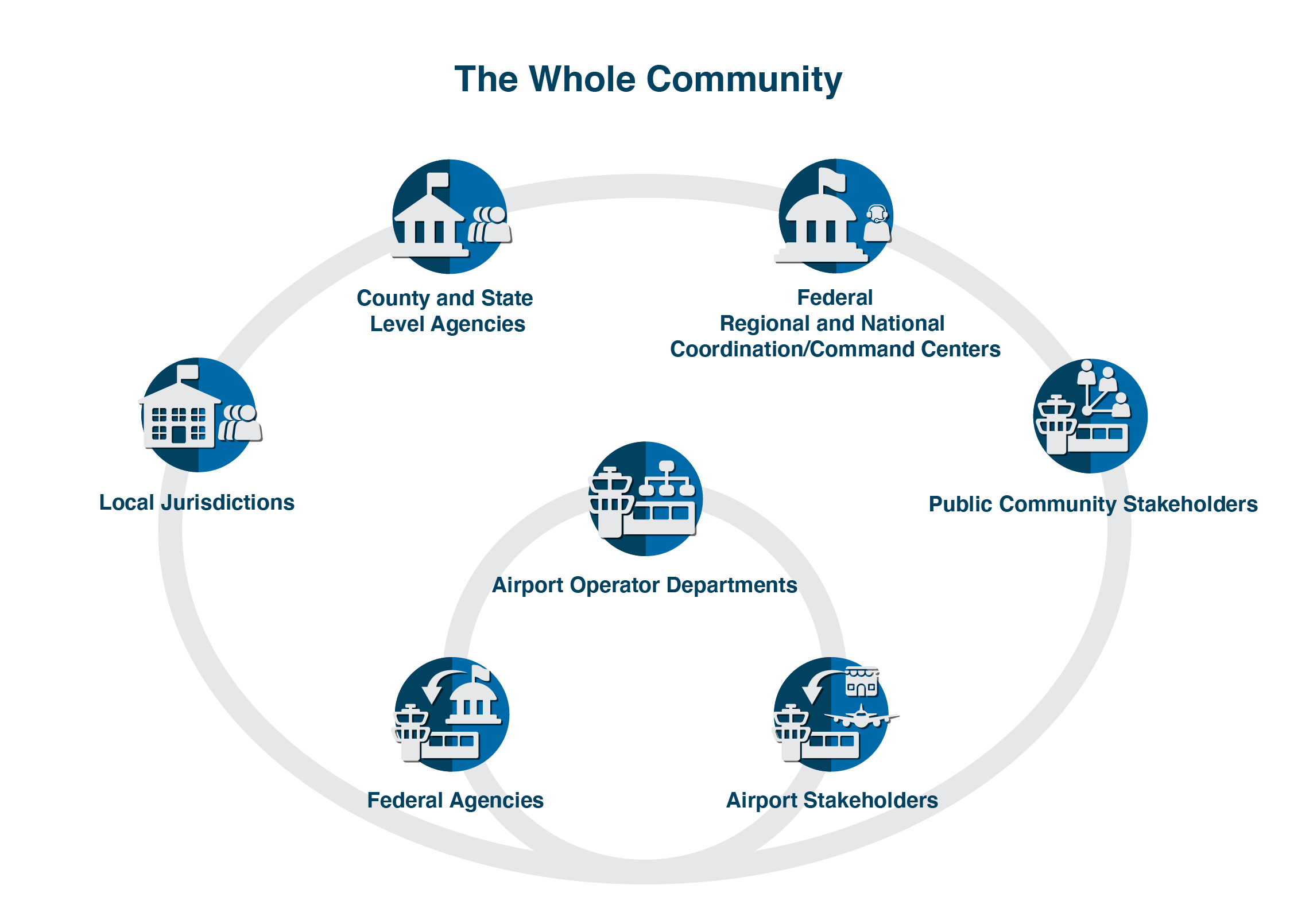
Figure 6.3: The Whole Community
Originally coined by the Federal Emergency Management Agency (FEMA), the term “whole community” includes all those who have a stake in effective emergency response. The whole community is a comprehensive list of all those with which you need to collaborate in planning your SM integration.
Developing relationships with each of these stakeholders is important. Of this group, collaborating with federal agencies can be the most difficult, especially for those agencies who are not based at your airport. Although the majority of incidents will not require a federal response, aligning with these agencies in advance provides better coordination with on-site federal partners, along with off-site partners when a regional or national response is needed. One way to start this is to use your existing relationships with on-site federal agencies to help identify regional and national contacts. For smaller airports in which there may be little or no federal presence, coordinating with regional offices is critical. The following section provides some valuable ways in which you can align with these agencies to make collaboration much smoother when the time for collaboration comes.
Alignment with Federal Agencies
Since federal agencies are required to be compliant with the National Incident Management System (NIMS), following the NIMS protocols at your airport will greatly help you integrate federal agencies into a response. NIMS specifically addresses the two-way flow of public information (including SM) in a crisis, regardless of the size and complexity of the situation. Aligning your SM integration with NIMS standards will facilitate the flow of information with your federal partners during an incident.
Building on this, the federal plans identify a number of Emergency Support Functions (ESFs) that may be needed during a response. SM communications falls under the External Operations Function identified as Emergency Support Function 15: Standard Operating Procedures, which serves “to coordinate outreach and ensure consistent public information.”1 “Annex R” of this report provides documentation on how to effectively integrate the use of SM into an Incident Command Communications System and is integrated down to the airport level.2 Its purpose is to outline “the plan for Federal departments and agencies to use digital, social, web-based and other interactive communications with the public during incidents requiring a coordinated Federal response.” We recommend that you mirror the operating principle of “maximum disclosure, with minimum delay.”3 As a guide, the Centers for Disease Control and Prevention (CDC) has incorporated this into its Crisis and Emergency Risk Communications (CERC) Manual. The manual is directly applicable to airports of all sizes and types and is a good resource for additional information.
Federal information is readily available through FEMA, CDC, FAA, and ACRP, among others. See the Resource tab for links to this information.
As part of this research, the research team convened a meeting of federal SM and EM personnel to get their feedback on this topic. They fully support this direction, recognize the benefit to their agencies of becoming members of the whole community, and urge every airport operator to proactively reach out to its respective federal agency regional representative to ensure that they are included. Further, these federal SM and EM personnel endorsed ESF #15 as the primary document to look to when aligning with federal agencies. This meeting included representatives from the headquarters of CBP, CDC, FAA, FEMA, the National Transportation Security Board (NTSB), the TSA, as well as representatives from Dallas Fort-Worth International Airport (DFW) and the Metropolitan Washington Airports Authority (MWAA). The group made clear that ESF #15 effectively provides both public information as well as private (internal) coordinated information in support of the emergency response to disruptions of any size and during any time.
Federal agencies have also identified the benefit in establishing airports as trusted sources of information by following airport operators' SM channels to enhance their listening for issues that might require a federal response or support. These agencies are urging airport operators to reach out to their respective regional representatives in order to establish themselves as a trusted source and share their SM channels. Additionally, throughout its case studies, ACRP Synthesis 82: Uses of Social Media to Inform Operational Response and Recovery During an Airport Emergency identifies the value that airports have discovered by taking the whole community approach in developing partnerships well before an incident occurs.4
Sharing Partner Lists with Whole Community Members
A common practice of stakeholders who have entered into a partnership with an airport operator is sharing their existing public, operations, and emergency responder partner lists—including points of contact and SM channels. This sharing enables all stakeholders to have the opportunity to identify and connect with the whole community. Stakeholders can choose to either combine their lists or develop a process for exchanging information and redirecting requests/inquiries to the appropriate stakeholder. As you incorporate new team members, have them identify the benefits that they are already receiving from those on their list. This enables each of you to quickly assess how you may support the SMEM program and provides an opportunity to engage with new segments of the public and new SM channels for listening.
This practice of sharing partner lists applies especially to large airports where departments have established specialized lines of business. Each department has already developed partnerships with a number of stakeholders: (1) other stakeholders at the airport, (2) other public and private entities within the local community, and (3) state and federal governments. Departments traditionally manage these partnerships independently during periods of normal operation, as well as during an emergency. SMEM integration provides an avenue to link the department partners with the rest of the whole community. At your airport, consider developing a process to assess the partnerships made by internal departments and opportunities for sharing information.
Tips for Those New to SMEM
- Facilitate a meeting of airport departments to review the benefits that SM, EM, and operations provide to your airport:
- Identify how you provide benefit to one another in enabling each other’s success
- Identify how SM can provide additional benefits to each department
- Identify the first actions that can be immediately taken to better communicate, collaborate, and coordinate your activities through the integration of SM into your existing procedures and practices
- Share with your SM, EM, and operations departments what you have learned regarding the airport community approach in enabling better outcomes:
- Discuss who is or should be a member of your airport community
- Continue to collaborate as you incorporate new partners into your community
- Review your existing airport emergency plan (AEP) seeking to identify the following:
- Opportunities for incorporating SM into the public information functional area of your plan
- Opportunities for incorporating SM into the other functional areas identified in your plan
- Share what you have learned with the leadership team at your airport, inviting them to learn about the benefits of integrating SM into EM and operations
Tips for the Advanced and for Large Airports
- Share this WebResource with your airport executive team in order to have the executives direct (if necessary) that other departments that shy away from emergency response or desire to work in a vacuum, work in a collaborative manner with EM and SM.
- Host a meeting of airport-wide partners (from SM, EM, and operations disciplines) to present the findings of this research.
- Develop and maintain a list of contacts with your airlines' media relations personnel. Begin by conducting a web search with the keywords: [airline name] + newsroom + media inquiry. Start with the corporate contact and build a relationship with them for planning and coordination.
SUPPLEMENTAL READING
See the "Whole Community" category in the Supplemental Reading section of the Resources tab.
REFERENCES
1. Emergency Support Function 15: Standard Operating Procedures, Federal Emergency Management Agency (Washington, D.C., 2019), p. 1, https://www.hsdl.org/?abstract&did=827651.
2. Federal Emergency Management Agency, R1-R4.
3. Federal Emergency Management Agency, C7.
4. ACRP Synthesis 82: Uses of Social Media to Inform Operational Response and Recovery During an Airport Emergency, Transportation Research Board (Washington, D.C.: 2017), http://www.trb.org/Main/Blurbs/176496.aspx.
